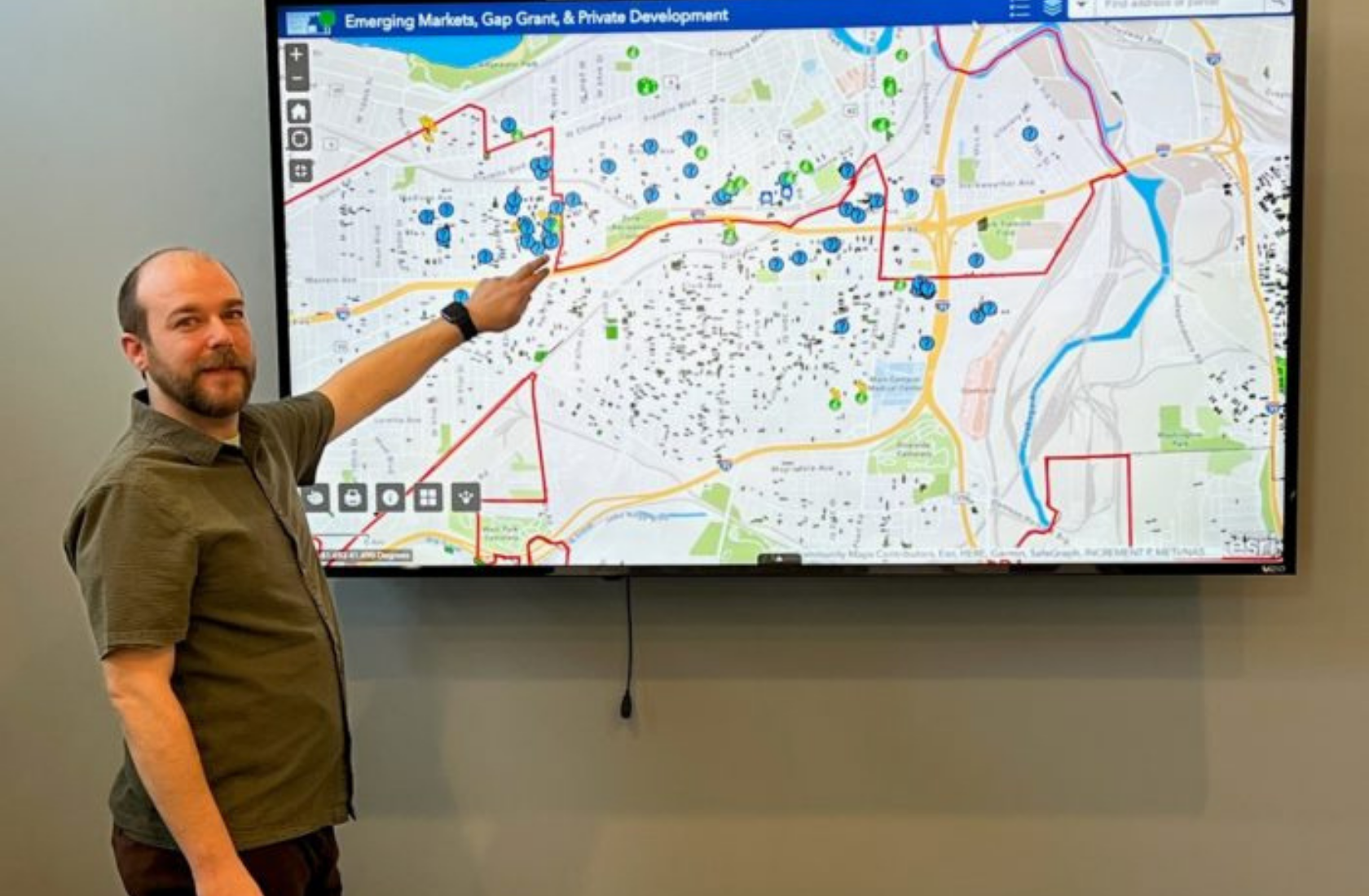We are often asked about the day-to-day work of the Cuyahoga Land Bank by curious residents and community leaders. In this ongoing Behind the Scenes series, we look at the sophisticated work performed by the Cuyahoga Land Bank research team. Matthew Thomas, GIS and Research Specialist, recently sat down to answer some frequently asked questions:
Why is data so important to the Land Bank’s work?
Beyond the daily upkeep of data and information that keeps the operations of the Cuyahoga Land Bank running smoothly, the research team helps the organization achieve its overall mission of strategically acquiring properties, returning them to productive use and reducing blight. Data drives many strategic land assembly decisions and is vital to our work with community, faith-based, social service and community development partners in neighborhood stabilization efforts and land reuse opportunities. The Center on Urban Poverty and Urban Development at Case Western Reserve University, which houses the NEOCANDO system that integrates property information across the County, the City of Cleveland and non-profit organizations, is our key collaborator in our data-related work.
How do you work with other county agencies?
Our work requires careful interaction and cooperation between several County agencies, including the Cuyahoga County Fiscal Office, Treasurer, Prosecutor, Clerk of Courts, Board of Revision (BOR) or Court of Common Pleas and the Sherriff’s Office. From data verification to monitoring tax foreclosure hearings to tracking properties, coordination and data-sharing amongst these agencies is essential.
What is GIS Mapping?
We use GIS (Geographic Information System) mapping to identify development opportunities within a given location, in specific neighborhoods, or even by property or building characteristics. This data lets us dissect neighborhood housing data on many levels to steer our strategic planning and development efforts and promotes thoughtful decision-making, careful planning and execution. We use the data to identify opportunities for in-house renovation projects, deed-in-escrow home renovations, and focused neighborhood stabilization projects. The data also aids in finding facilities, land or homes for our mission and faith-based community partners.
Give us an example of the impact research has on the work of the Cuyahoga Land Bank?
A great example is the work we undertook in the earliest stage of our implementation of the Cuyahoga County Housing Program, a six-year $30 million effort to stabilize home values, eliminate blight, and encourage renovation and development of affordable housing. The research team examined various maps with different data points such as homeownership rates, housing values, vacancy rates, home sales and mortgage data, etc., in a months-long effort to delineate “emerging” and “future” housing markets within the County. This analysis guides where funding can be awarded for home renovation, new home construction and other projects funded by this Program.

